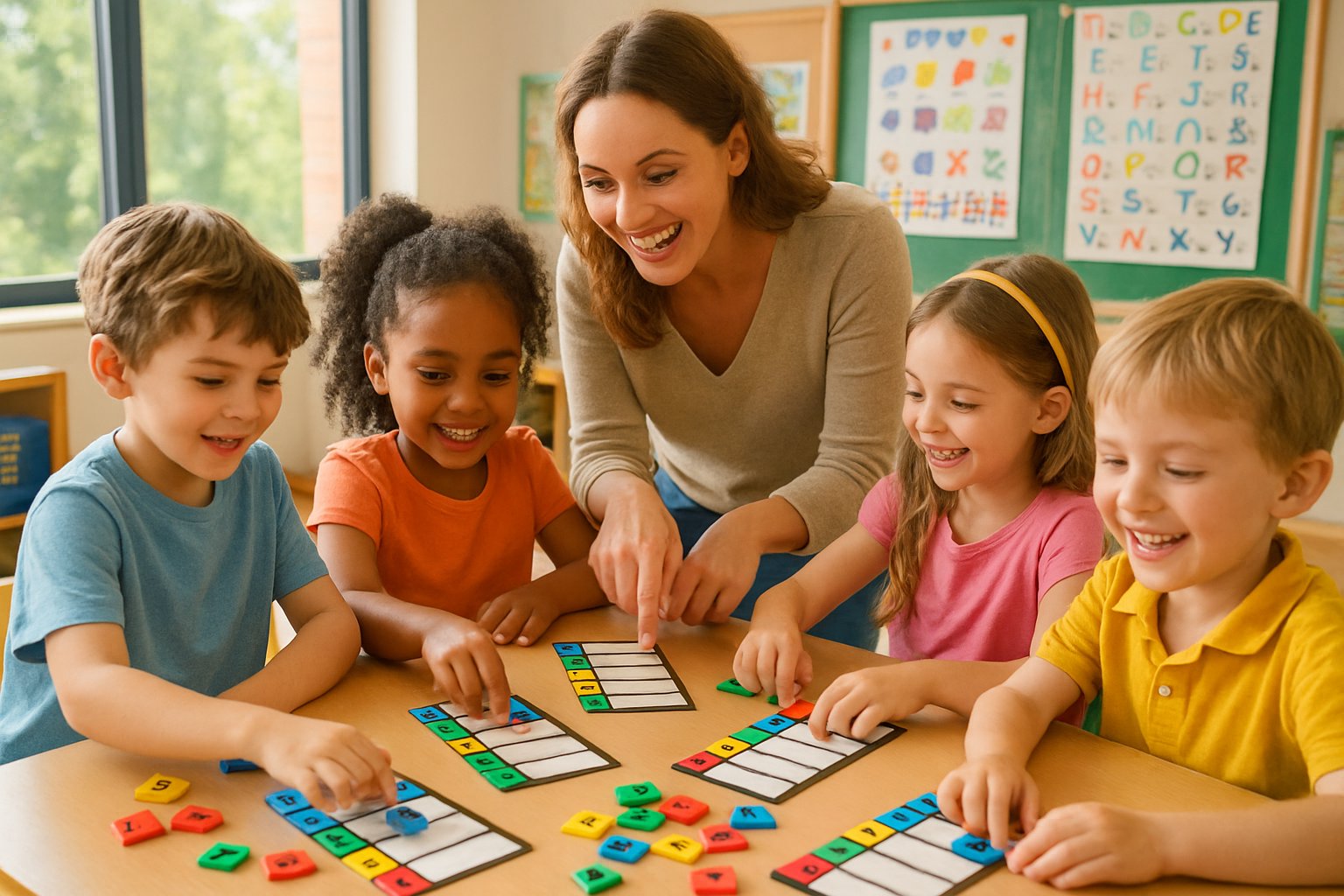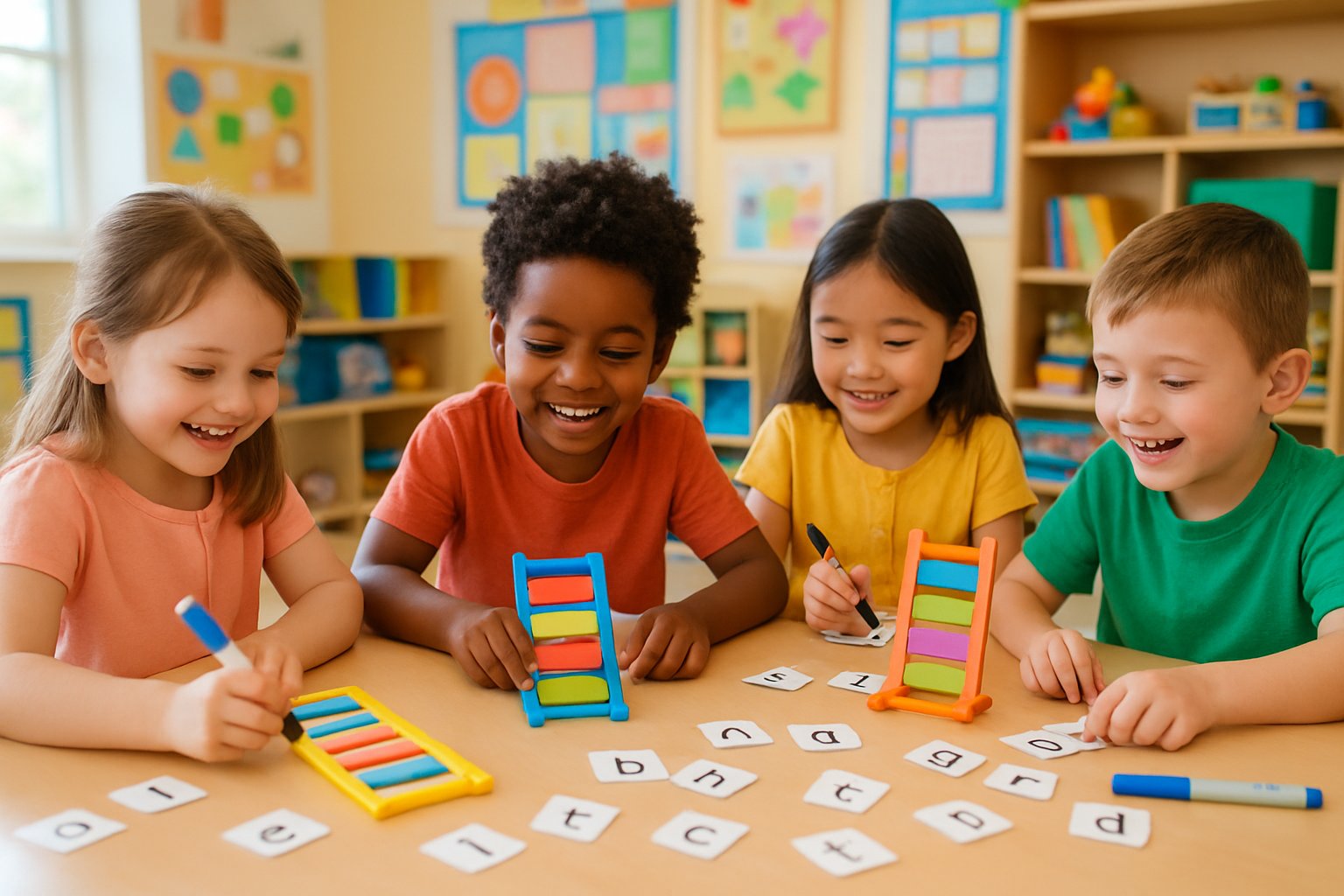Essential Phonics Skills with Blend Ladders

Blend ladders help children connect sounds to letters, build decoding confidence, and strengthen early reading fluency. These activities combine movement, sound manipulation, and visual cues to make phonics instruction both clear and hands-on.
Building Phonemic Awareness
Phonemic awareness means hearing and working with the smallest parts of spoken words—individual sounds called phonemes. When students use a phonics ladder, they listen carefully as one sound changes at a time.
Teachers can ask children to say a word like cat, then replace the first sound to make bat or mat. This step-by-step change helps them notice how a single sound shift can create a new word.
Using tools like letter tiles or magnetic letters makes the process interactive. Students can move letters physically as they pronounce each new word. Activities like these, described in engaging blend ladder games, turn sound practice into a game.
Children also benefit from short listening challenges. For example, they can identify whether two words rhyme or begin with the same sound. These tasks strengthen their ability to hear and separate sounds before they even start reading text.
Mastering Letter Sounds and Blending
Once children can hear sounds clearly, they learn to connect those sounds to written letters. Blend ladders help them see how letter sounds combine to form blended sounds like bl, st, and tr.
Teachers often start with simple blends, such as fl in flag or gr in green. Students climb the ladder by changing one letter at a time—flag, flap, slap, slip. This reinforces both recognition and pronunciation of blends.
Games such as hands-on blend ladder activities give learners repeated practice in reading and spelling patterns. The clear structure helps them understand that each letter or blend contributes a distinct sound to a word.
Visual aids like pocket charts or whiteboard ladders make it easy to track progress. As students read each new word aloud, they strengthen both decoding and fluency skills.
Practicing CVC Words and Word Building
CVC words—consonant-vowel-consonant patterns like cat, dog, and sun—form the foundation for early reading. They allow students to practice word building in a predictable way while applying blending skills.
Teachers can guide learners to replace one letter at a time on the ladder. For instance:
| Step | Word | Change |
|---|---|---|
| 1 | cat | starting word |
| 2 | bat | change /c/ to /b/ |
| 3 | bit | change vowel to /i/ |
| 4 | sit | change /b/ to /s/ |
This process helps children see how written letters match spoken sounds. Activities like these, highlighted in phonics-based word mapping, build automatic recognition of sound-letter connections.
As students gain confidence, teachers can introduce blends or digraphs into their ladders. By combining movement, repetition, and visual support, blend ladders make phonics practice structured and enjoyable for young readers.
10 Fun Blend Ladder Activities Kids Will Love

Children learn best when they can move, play, and explore while practicing phonics. These activities build reading skills through hands-on games that focus on blending sounds, matching letters, and recognizing patterns in words.
Blend Ladder Race Games
Students race to climb their blend ladders by reading or building words correctly. Each step on the ladder represents one correct blend or word.
Teachers can use blend cards with s blends, r blends, and l blends to guide practice. For example, one student reads “slip,” and the next changes it to “slap.” The first to reach the top wins.
A fun twist involves using timers or dice rolls to decide how many rungs students can move. This keeps the pace lively while encouraging accurate reading.
Sound Hunt Challenges
Sound hunts turn phonics lessons into scavenger games. Students search the classroom for objects or pictures that begin with specific blends or digraphs.
They might look for items starting with br, st, or ch. Each correct find adds a step to their blend ladder. Teachers can display ladders on a board and let students attach their discoveries.
This activity works well in literacy centers or at home. It strengthens phonemic awareness and helps children connect real-world objects to letter sounds.
Story Building with Ladder Words
Students use blend ladder words to create short stories. Each rung adds a new word that must appear in the next sentence.
For example, a ladder might include “slip,” “slap,” “snap,” and “trap.” Students write or tell a story using each word in order. This encourages creativity while reinforcing word recognition.
Teachers can group students to share and read their stories aloud. The activity combines writing, speaking, and reading practice in one engaging format.
Blend Ladder Hopscotch
Blend ladder hopscotch combines movement with sound recognition. Teachers draw a hopscotch grid outside or tape one on the floor indoors.
Each square contains a blend or short word such as “bl,” “gr,” or “st.” Students hop to the next space only after saying the blend correctly. Missed or misread blends send them back one step.
This game works well for kinesthetic learners who benefit from physical activity during phonics lessons. It also helps improve balance and coordination while reinforcing reading patterns.
Flip-and-Read Blends
Flip-and-read games use blend cards that students flip to reveal new combinations. Each card shows a blend on one side and a word or picture on the other.
For instance, a card might show “fl” on the front and “flag” on the back. Students flip, read, and say the sound aloud before moving up their ladder. Teachers can group cards by s blends, r blends, and l blends for focused practice.
This low-prep activity supports small-group instruction and independent learning. It’s easy to adapt for different reading levels.
Blend Card Memory Match
Memory match games help students connect blends and words through repetition. Teachers prepare pairs of cards—one with a blend and one with a matching word or picture.
Students take turns flipping two cards at a time, trying to find pairs like “gr” and “green.” Each correct match earns a ladder step. The player with the most matches wins.
This game reinforces visual memory and sound-symbol connections. Printable versions like these free blend ladders make setup quick and easy for classroom or home use.
Blends Puzzles and Sorting
Sorting and puzzle activities help children see how blends fit into words. Teachers can cut apart word cards so each piece contains one part of a blend.
Students match beginnings and endings to form complete words such as “pl” + “ant” = “plant.” They can also sort cards into groups of r blends, s blends, or digraphs.
Using color-coded cards simplifies the process for younger learners. This structured, hands-on approach builds confidence with decoding and spelling patterns.
Beanbag Blend Toss
This active game combines movement with reading practice. Teachers label buckets or hoops with blends like “br,” “cl,” and “st.”
Students toss a beanbag into a target, then read or name a word using that blend. For example, if it lands in “br,” they might say “brick.” Each correct response moves them up their blend ladder.
The game encourages quick recall of blends and works well in small groups. It’s ideal for outdoor play or classroom movement breaks.
Blends Fishing Game
Teachers create a fishing pond using paper fish labeled with blend words. Students “catch” fish using magnetic rods or paper clips.
After catching a fish, they read the word aloud and identify its blend. Correct answers earn ladder points. Words can include crab, flag, or snow depending on the blends being practiced.
This game keeps students engaged while improving decoding skills. Printable templates from Clever Homeschool’s blend ladder activities make it easy to set up.
Interactive Digital Blend Ladders
Digital blend ladders bring phonics practice to tablets or computers. Students drag and drop letters to form words, climb ladders, or complete sound challenges.
Programs can include r blends, s blends, and common digraphs like sh or ch. Many tools provide instant feedback, helping students correct mistakes right away.
Teachers can project digital ladders for group play or assign them individually. Online options like printable and digital blend ladder ideas allow customization for different reading levels and lesson goals.
Leave a Reply